dmaiocchi
Don't write tests! Generate them.
an invention by e_bischoff
The title of this project is inspired from the must-see video
Learn SLEnkins
a project by tian-feng
I'm interesting in SLEnkins project and I want to learn it a bit. I will try it and know how it works and how to use it.
Review scripts in openQA project
a project by yosun
To say it's a review, it's better to say it's a good way to learn from others. I'll review test scripts in openQA project as much as I can, digest them and learn how to write Perl script more pretty. I'll make some notes for sharing.
Exporting ansible experience to Salt
an idea by dgutu
Because of past experience with ansible as a tool to orchestrate the code deployment on multiple platforms consider important to get most from Salt as
Practice and migrate some testcases into SLEnkins & Improve of qa_automation project in openQA
a project by yosun
Automation tools are our emotional friends. Know each other deeper and improve it, it's a way to be harmonious for our friendship.
Learn and migrate virtualization test to Twopence structure
a project by XGWang0
Task: - Learn Twopence structure
Make slenkins test happay
a project by tian-feng
Metadata project provides testsuites as a service. Slenkins test wants to use metadata but requires two new fields. I will add nodes and incompatible two new fields.
flatpak (previously xdg-app) runtime based on openSUSE / flatpak support for OBS
a project by fcrozat
Flatpak (previously known as xdg-app) is a bundle system, based on ostree, to easily make available applications bundle to users. Currently, flatpack is available on openSUSE Tumbleweed but we don't ship any runtime based on openSUSE (freedesktop or GNOME runtime).
Another try on minimalistic C widget library
a project by metan
I've attempted this several times already and each attempt had different shortcomings. I'm kind of curious about how exactly will I fail this time.
 Hack the Hack Week tool
Hack the Hack Week tool
an invention by hennevogel
This project is about advancing the tool you're currently browsing.
 Integrate ABRT to openSUSE
Integrate ABRT to openSUSE
an invention by michalnowak
There were several attempts to integrate ABRT to openSUSE. In this Hack Week I'd like to:
 Integrate ABRT to openSUSE
Integrate ABRT to openSUSE
an invention by michalnowak
There were several attempts to integrate ABRT to openSUSE. In this Hack Week I'd like to:
Integrate Machinery into SLEnkins (QA-automation-testing)
a project by dmaiocchi
WEB_PAGES:
Integrate Machinery into SLEnkins (QA-automation-testing)
a project by dmaiocchi
WEB_PAGES:
Integrate Machinery into SLEnkins (QA-automation-testing)
a project by dmaiocchi
WEB_PAGES:
Integrate Machinery into SLEnkins (QA-automation-testing)
a project by dmaiocchi
WEB_PAGES:
Integrate Machinery into SLEnkins (QA-automation-testing)
a project by dmaiocchi
WEB_PAGES:
Integrate Machinery into SLEnkins (QA-automation-testing)
a project by dmaiocchi
WEB_PAGES:
Integrate Machinery into SLEnkins (QA-automation-testing)
a project by dmaiocchi
WEB_PAGES:
Integrate Machinery into SLEnkins (QA-automation-testing)
a project by dmaiocchi
WEB_PAGES:
Integrate Machinery into SLEnkins (QA-automation-testing)
a project by dmaiocchi
WEB_PAGES:
Integrate Machinery into SLEnkins (QA-automation-testing)
a project by dmaiocchi
WEB_PAGES:
virtio-serial in OpenStack
a project by e_bischoff
Currently, the usual way to communicate with VM instances in the cloud from outside is ssh. This is okay for most uses, but a) does not work when you mess up with the guest's ability to network and b) requires a free floating IP.
virtio-serial in OpenStack
a project by e_bischoff
Currently, the usual way to communicate with VM instances in the cloud from outside is ssh. This is okay for most uses, but a) does not work when you mess up with the guest's ability to network and b) requires a free floating IP.
virtio-serial in OpenStack
a project by e_bischoff
Currently, the usual way to communicate with VM instances in the cloud from outside is ssh. This is okay for most uses, but a) does not work when you mess up with the guest's ability to network and b) requires a free floating IP.
virtio-serial in OpenStack
a project by e_bischoff
Currently, the usual way to communicate with VM instances in the cloud from outside is ssh. This is okay for most uses, but a) does not work when you mess up with the guest's ability to network and b) requires a free floating IP.
virtio-serial in OpenStack
a project by e_bischoff
Currently, the usual way to communicate with VM instances in the cloud from outside is ssh. This is okay for most uses, but a) does not work when you mess up with the guest's ability to network and b) requires a free floating IP.
virtio-serial in OpenStack
a project by e_bischoff
Currently, the usual way to communicate with VM instances in the cloud from outside is ssh. This is okay for most uses, but a) does not work when you mess up with the guest's ability to network and b) requires a free floating IP.
virtio-serial in OpenStack
a project by e_bischoff
Currently, the usual way to communicate with VM instances in the cloud from outside is ssh. This is okay for most uses, but a) does not work when you mess up with the guest's ability to network and b) requires a free floating IP.
virtio-serial in OpenStack
a project by e_bischoff
Currently, the usual way to communicate with VM instances in the cloud from outside is ssh. This is okay for most uses, but a) does not work when you mess up with the guest's ability to network and b) requires a free floating IP.
virtio-serial in OpenStack
a project by e_bischoff
Currently, the usual way to communicate with VM instances in the cloud from outside is ssh. This is okay for most uses, but a) does not work when you mess up with the guest's ability to network and b) requires a free floating IP.
virtio-serial in OpenStack
a project by e_bischoff
Currently, the usual way to communicate with VM instances in the cloud from outside is ssh. This is okay for most uses, but a) does not work when you mess up with the guest's ability to network and b) requires a free floating IP.
virtio-serial in OpenStack
a project by e_bischoff
Currently, the usual way to communicate with VM instances in the cloud from outside is ssh. This is okay for most uses, but a) does not work when you mess up with the guest's ability to network and b) requires a free floating IP.
virtio-serial in OpenStack
a project by e_bischoff
Currently, the usual way to communicate with VM instances in the cloud from outside is ssh. This is okay for most uses, but a) does not work when you mess up with the guest's ability to network and b) requires a free floating IP.
 QA Lab automated inventory
QA Lab automated inventory
an idea by sebchlad
Problem: QA Labs need some inventory from time to time. Usually people are busy and this tasks has lower priority. Effectively it means there is some mess in QALabs.
SUSE Music(ian) Space
a project by ralfflaxa
Once again, the SUSE band is coming together to make music and we're planning a party this time round!!!
TumbleSLE - Applying Tumbleweed Logic to the SLE codebase for more efficient testing & development
an invention by RBrownSUSE
Right now internal SLE development is still organised & structured around the concept of 'Milestones'. Schedules are defined, deadlines are set, and off we go making Alpha 1, 2, 3, Betas 1, 2, 3, RC's, and so on.
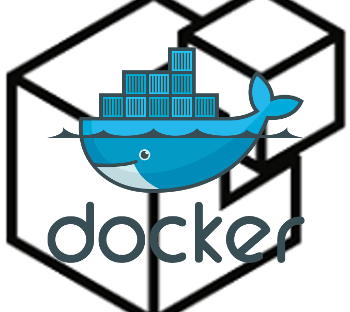 Build Docker images with pure Salt
Build Docker images with pure Salt
an invention by dmacvicar
Results
Port supportconfig to openSUSE
a project by eeich
Supporttools are great and useful utilities to help support and development
Testbus
an invention by okir
Create a framework for running tests distributed across a number of hosts. The goal is to be able to run tests for things like
Hack-a-geeko
a project by okir
Using traditional hardware development tools, apply a Non-uniform Choppy Transformation to a block of ligneous substance. The end result should be a 3D rendering of the Geeko glyph.
QA Dashboard - provide a easy overview of the quality status of a product in development
a project by xgonzo
QA uses a dashboard (SUSE internal: http://qa.suse.de/dashboard/ ) to provide an overview of various data to assess the quality of a product.
Snap Support for OBS
a project by adrianSuSE
Add support to build snappy images in OBS. This means we need to parse snapcraft.yaml build description for dependencies, prepare data from remote resources and handle the build.
Gomoduino: put some nice lights on your workstation to notify your coleagues when you are busy
a project by vcuadradojuan
https://github.com/viccuad/gomoduino
Merge hermes into OBS API
a project by coolo
After https://hackweek.suse.com/projects/105 the next thing to merge is hermes.
Analyze supportconfig data with ELK (elasticsearch, logstash, kibana)
a project by kwk
We all pant for customer data. Which hardware do customers run ? Which packages are installed ? Which services are running ? etc. pp.
Upstream Salt snapper support
an invention by dmacvicar
Prepare the module and concept done for the CSM Workshop and prepare it for upstream inclusion.
hacking susetest
a project by dmaiocchi
github https://github.com/okirch/susetest
hacking susetest
a project by dmaiocchi
github https://github.com/okirch/susetest
hacking susetest
a project by dmaiocchi
github https://github.com/okirch/susetest
hacking susetest
a project by dmaiocchi
github https://github.com/okirch/susetest
hacking susetest
a project by dmaiocchi
github https://github.com/okirch/susetest
hacking susetest
a project by dmaiocchi
github https://github.com/okirch/susetest
hacking susetest
a project by dmaiocchi
github https://github.com/okirch/susetest
hacking susetest
a project by dmaiocchi
github https://github.com/okirch/susetest
hacking susetest
a project by dmaiocchi
github https://github.com/okirch/susetest
hacking susetest
a project by dmaiocchi
github https://github.com/okirch/susetest
Simple Gnome 3 extension for wicked in JS/CS
a project by thehejik
I want to learn JavaScript or CoffeeScript and how to write Gnome 3 extensions. I think that the right task for learning JS/CS could be work on extension for our wicked network manager because I miss some NetworkManager style plugin.
Simple Gnome 3 extension for wicked in JS/CS
a project by thehejik
I want to learn JavaScript or CoffeeScript and how to write Gnome 3 extensions. I think that the right task for learning JS/CS could be work on extension for our wicked network manager because I miss some NetworkManager style plugin.
Jenkins Dashboard Web in Seaside (Pharo Smalltalk)
a project by thehejik
I want to create a basic web dashboard for Jenkins view with help of Jenkins XML API , Pharo, Seaside and Bootstrap. The biggest benefit for me would be if I can learn how to handle with Classes and its instances containing data from Jenkins in pure object programming language.
Jenkins Dashboard Web in Seaside (Pharo Smalltalk)
a project by thehejik
I want to create a basic web dashboard for Jenkins view with help of Jenkins XML API , Pharo, Seaside and Bootstrap. The biggest benefit for me would be if I can learn how to handle with Classes and its instances containing data from Jenkins in pure object programming language.
Jenkins Dashboard Web in Seaside (Pharo Smalltalk)
a project by thehejik
I want to create a basic web dashboard for Jenkins view with help of Jenkins XML API , Pharo, Seaside and Bootstrap. The biggest benefit for me would be if I can learn how to handle with Classes and its instances containing data from Jenkins in pure object programming language.
Jenkins Dashboard Web in Seaside (Pharo Smalltalk)
a project by thehejik
I want to create a basic web dashboard for Jenkins view with help of Jenkins XML API , Pharo, Seaside and Bootstrap. The biggest benefit for me would be if I can learn how to handle with Classes and its instances containing data from Jenkins in pure object programming language.
Find the exploit on the hackweek-tool
a project by dmaiocchi
there is a small security, data manipulation bug on the hackweek-tool.
Find the exploit on the hackweek-tool
a project by dmaiocchi
there is a small security, data manipulation bug on the hackweek-tool.
Find the exploit on the hackweek-tool
a project by dmaiocchi
there is a small security, data manipulation bug on the hackweek-tool.
Climbing Ticklist
an invention by j_renner
Ticklist is a web application enabling users to record their ascents of climbing routes as well as to maintain their personal list of currently projected routes. My implementation went from working alpha back to pre-alpha status (~ basic things not working) while migrating parts of the codebase (knockout.js -> angular.js). The goal of this hackweek project was therefore to finish this migration and fix the basic features in order to make the app useful at least for personal usage.
 YaST Integration Tests Using Cucumber
YaST Integration Tests Using Cucumber
a project by lslezak
Currently we use openQA for the the YaST integration tests. It runs YaST in a VM and controls it via emulating keyboard input. The result is checked by comparing the screenshots.
Investigate using Terraform plus Salt as HA cluster test platform
a project by KGronlund
For testing Hawk, we're currently using a Vagrant configuration, and for testing HA releases we've been using a set of scripts originally authored by Antoine Ginies as a Hackweek project.
Farfalla
a project by dmaiocchi
Farfalla, is a bot for analyze cucumber failures on the fly.
A daemon program that empowers telephone appliances and SMS-capable devices to use Internet features
a project by guohouzuo
Websh is:
Improve headmore (your VNC client for character terminals) with new features
a project by guohouzuo
headmore is your fully functional VNC client (viewer + control) launched from command line for your geeky character terminals (Linux VT console, xterm, and more):
Hack salt-toaster to use systemd-nspawn instead of docker
a project by mdinca
It seems that systemd-nspawn, together with machinectl can use qcow2 images directly.
go verdura, Particularly important are the CI vitamins
a project by dmaiocchi
https://github.com/MalloZup/go-verdura
 Little-Big sumaform improvements
Little-Big sumaform improvements
a project by moio
sumaform is a set of terraform modules to deploy SUSE Manager installations originated in Hackweek 14.
 Little-Big sumaform improvements
Little-Big sumaform improvements
a project by moio
sumaform is a set of terraform modules to deploy SUSE Manager installations originated in Hackweek 14.
 Little-Big sumaform improvements
Little-Big sumaform improvements
a project by moio
sumaform is a set of terraform modules to deploy SUSE Manager installations originated in Hackweek 14.
 Little-Big sumaform improvements
Little-Big sumaform improvements
a project by moio
sumaform is a set of terraform modules to deploy SUSE Manager installations originated in Hackweek 14.
 Little-Big sumaform improvements
Little-Big sumaform improvements
a project by moio
sumaform is a set of terraform modules to deploy SUSE Manager installations originated in Hackweek 14.
 Little-Big sumaform improvements
Little-Big sumaform improvements
a project by moio
sumaform is a set of terraform modules to deploy SUSE Manager installations originated in Hackweek 14.
 Little-Big sumaform improvements
Little-Big sumaform improvements
a project by moio
sumaform is a set of terraform modules to deploy SUSE Manager installations originated in Hackweek 14.
 Little-Big sumaform improvements
Little-Big sumaform improvements
a project by moio
sumaform is a set of terraform modules to deploy SUSE Manager installations originated in Hackweek 14.
Taskotop on the web
a project by dleidi
Taskotop is a tool to check what taskomatic is currently doing on a SUSE Manager server: it's a command line python tool. The core of the tool is to get some info about jobs that taskomatic is running with a fixed time cycle running some queries and showing results to the shell.
Taskotop on the web
a project by dleidi
Taskotop is a tool to check what taskomatic is currently doing on a SUSE Manager server: it's a command line python tool. The core of the tool is to get some info about jobs that taskomatic is running with a fixed time cycle running some queries and showing results to the shell.
Taskotop on the web
a project by dleidi
Taskotop is a tool to check what taskomatic is currently doing on a SUSE Manager server: it's a command line python tool. The core of the tool is to get some info about jobs that taskomatic is running with a fixed time cycle running some queries and showing results to the shell.
Taskotop on the web
a project by dleidi
Taskotop is a tool to check what taskomatic is currently doing on a SUSE Manager server: it's a command line python tool. The core of the tool is to get some info about jobs that taskomatic is running with a fixed time cycle running some queries and showing results to the shell.
Taskotop on the web
a project by dleidi
Taskotop is a tool to check what taskomatic is currently doing on a SUSE Manager server: it's a command line python tool. The core of the tool is to get some info about jobs that taskomatic is running with a fixed time cycle running some queries and showing results to the shell.
Task manager in Elixir/Erlang
a project by vmoravec
Elixir is a Ruby-ish dialect of Erlang with meta-programming capabilities, this is my first project using it: pedro . The idea is to create a task manager that would organize tasks (jobs) and manage them in projects. It will be running locally, remotely or both in multi-node setup, will provide CLI, have web UI relying on http and websockets.
 Deploying software.opensuse.org
Deploying software.opensuse.org
a project by dmacvicar
After an internal call for help to take over software.opensuse.org deployment, I spend some time studying the code in order to find out what would it mean to take it over.
Bootstrap portusctl as a separate repository
a project by mssola
Right now portusctl is a tool which is embedded into the Portus source code. This was done out of simplicity and with the hope that we would share as much code as possible with Portus itself. However:
 Play with Matrix.org as replacement for IRC
Play with Matrix.org as replacement for IRC
a project by dmacvicar
Matrix.org is a project to create a protocol and server implementation to replace IRC.
SUSEGo - A knowledge search engine
a project by jcavalheiro
Why
SUSEGo - A knowledge search engine
a project by jcavalheiro
Why
Pair Programming Test Drive/Probefahrt
a project by mamorales
Are you interested in pairing? Are you wondering whether it is something that would help you and your team members in your current project? Would you like to try it out before you fully commit to such an extreme idea? Then this is your lucky day Sir/Madam!
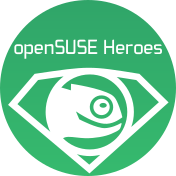 Improve the openSUSE infrastructure
Improve the openSUSE infrastructure
a project by lrupp
There is a lot to do in the openSUSE infrastructure land...
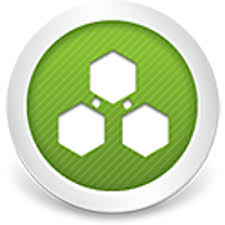.jpg) SUSE Manager plugin/extension system
SUSE Manager plugin/extension system
an idea by dmacvicar
Some of SUSE Manager features are quite vertical to the rest of the system.
crash-python
a project by jeff_mahoney
New Development
A generic mechanism for analysing and manipulating diverse software configuration files
a project by guohouzuo
There are vastly different syntaxes being used by Linux softwares nowadays - Apache, Bind, NTP, Postfix, just to name a few. It is a very tedious task to implement comprehensive parser for every single configuration file, and even more difficult to produce configuration text (file content) from parsed syntax tree.
A brand new approach to system configuration management
a project by guohouzuo
In the previous hackweek (14), the following objectives from project "A generic mechanism for analysing and manipulating diverse software configuration files" were worked on:
SUSE Musicians Project
a project by jctmichel
We started the SUSE Musician's Space several Hackweeks ago, out of which we spawned the SUSE band, now known as SUSE LOUD.
Create a web application for configuring laitos - your "Do Everything" software for serious preppers
a project by guohouzuo
Laitos is an open source project written in go, it emphasizes simplicity of maintenance and delivers a complete suite of web, DNS, and mail servers to host a personal web server. Beyond the suite of servers, laitos software hooks into numerous API platforms, that altogether enable user access to Internet features (such as Facebook, Twitter, emails) via alternative communication infrastructures such as telephone (PSTN), SMS, and satellite terminals.
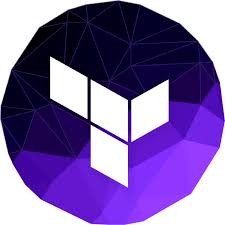.jpg) Implement kernel cmdline and/or autoyast/kickstart support in terraform-provider-libvirt
Implement kernel cmdline and/or autoyast/kickstart support in terraform-provider-libvirt
a project by dmacvicar
terraform-provider-libvirt supports CoreOS ignition file/content, which end rendered as kernel command line options (the provider does some nice stuff like allowing you to pass the json content and it will take care of putting it into a temporary file).
Go async (and non-blocking) with HTTP requests
a project by j_renner
There is a couple of libraries available for asynchronous and non-blocking processing of HTTP requests (in Java) that can be used to avoid having threads waiting for responses in request intensive applications, for example:
New SUSE R&D Employee workstation/laptop auto-installer
a project by dmacvicar
The idea is to create a bootable medium (eg. pendrive) that allows:
Learn QT Linguist and improve translations for FET (a timetable creator)
a project by juliogonzalezgil
The idea is getting a general knowledge of how QT Linguist works, and help FET with some translations.
Write a commandline tool to generate SSL Certificates
a project by mcalmer
- easy to use commandline tool to generate CA Certificates and Server Certificates
- package the certificates in RPMs for easy deployment
Get terraform-provider-libvirt closer to release
an invention by dmacvicar
terraform-provider-libvirt adds libvirt support to terraform.
Learning & using Tensorflow to estimate patch installation times on SUSE Manager
an invention by PSuarezHernandez
Introduction
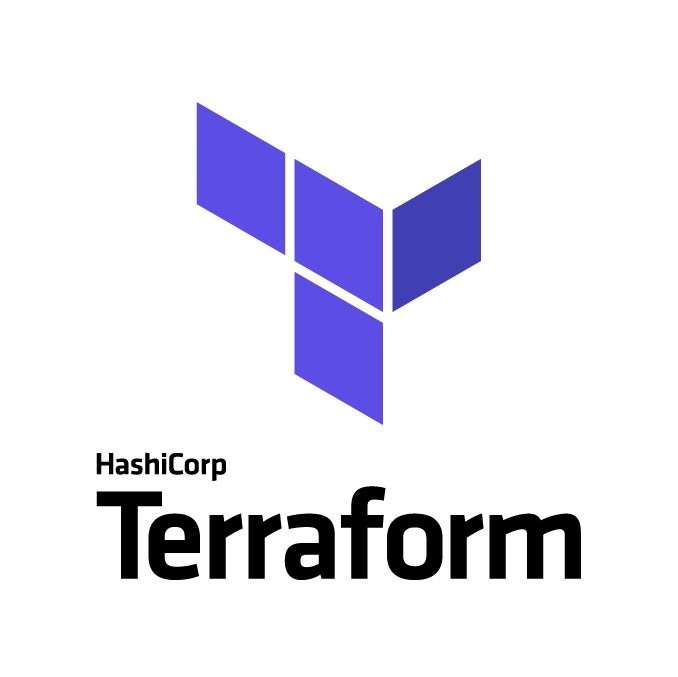 Deploy our Terraform code via GitLab CI
Deploy our Terraform code via GitLab CI
a project by hfschmidt
In our team, we currently manually deploy our Terraform code (namely, the SUSE Registry at registry.suse.com) from our own PCs. This is error prone, as it would be very easy to override something by mistake.
I want to create the appropriate .gitlab-ci.yml file that will:
Improve Ruby
a project by ammartinez
Let's use the Hackweek to improve Ruby, the programming language I use every day. It is while using a language when you can realised that things that need/can to be improved, so there are many things that only Ruby developers can raise up. Also, getting involved in the development of Ruby will help to get a better understanding of how it works. So I will take my ideas/concerns to the Ruby community and implement some of the them in the code of the Ruby core.
 osc plugin store
osc plugin store
an idea by hennevogel
There are many great osc plugins but no easy way to discover them from osc. Add a plugin command to osc:
Machine Learning: Participate in a competition on Kaggle
a project by mdinca
The goal is to learn about Kaggle and Machine Learning.
 geekos.prv.suse.net employee finder
geekos.prv.suse.net employee finder
an invention by hennevogel
Mission:
SUSE Manager containerization
a project by mbologna
Let's containerize SUSE Manager! This will open up different (and interesting) scenarios:
Romantic photo competition
a project by kalabiyau
Hackweek is a place for fun and things and also great things and a lot of fun. Some things don't require a reason - they are fun, that's all to it. Here goes a small competition with a lot of fun to it.
logorator: an offline internal analytics tool
a project by dleidi
There are customer use cases where sharing information via internet or uploading data somewhere is not acceptable for security reasons: this avoid the usage of some tool like the most famous Google Analytics, and prevent developers from understanding how the web application is used by the customers. I don't want to reinvent the wheel and re-implement a copy of Google Analytics, but getting inspired from it, the goal is to reuse information that we already have to extrapolate an analysis of the WebApp customer usage.
Mottainai - what a waste!
a project by EDiGiacinto
Mottainai - Task/Job/Build Server for everyone!
Running openATTIC and DeepSea on multiple distros
a project by jluis
Running openATTIC and DeepSea on Multiple Distributions
forensic software architecture of large codebases
a project by dmaiocchi
code
OBS GitLab integration
a project by adrianSuSE
First part is to support automated builds on git pushes also with gitlab, similar to what we do already with github.com. This means OBS would get notificated in a save way to refetch sources and start build on each commit.
 Information Architecture Redesign
Information Architecture Redesign
a project by loquacity
I'd like to consider the possibilities for redesigning SUSE documentation. Mark Baker ("Every Page is Page One") says "include it all, filter it afterwards" which is the exact antithesis of what we currently offer. Let's consider how we can move documentation into the future: search driven, user friendly, accessible, and in line with the way our readers use the rest of the internet.
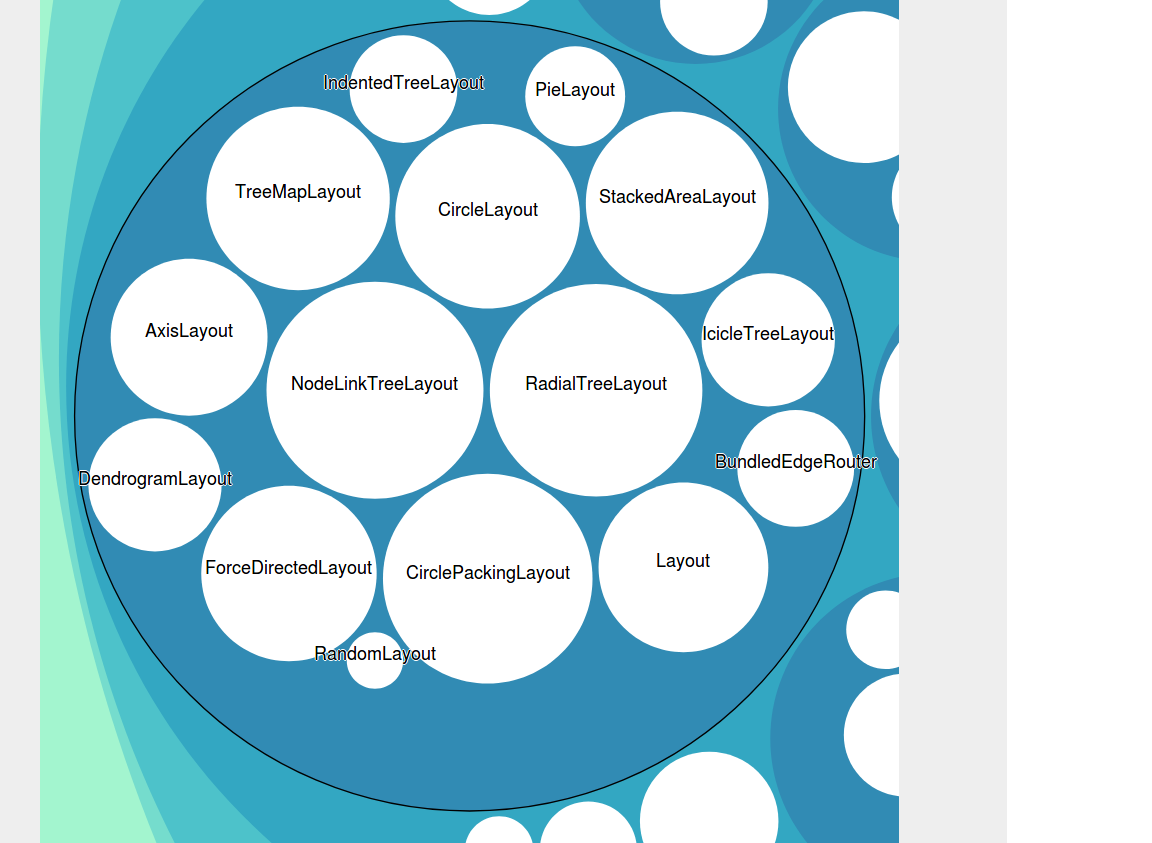 kubeojo: Health metrics for products and testsuites
kubeojo: Health metrics for products and testsuites
a project by dmaiocchi
Updated almost 4 years ago. 2 hacker ♥️. 1 follower.contribute and improve salt-toaster (https://github.com/openSUSE/salt-toaster)
a project by dmaiocchi
i want to spend some day of my hackweek to improve salt-toaster https://github.com/openSUSE/salt-toaster
Second Memory
an invention by jcavalheiro
What is it about?
create custom theme for hugo
a project by m_meister
in https://gohugo.io/ you can easily write custom themes via templates for creation of static websites
move concourse instance from bare-metal to caasp production instance
a project by m_meister
Right now our concourse instance http://salzbreze.suse.de:8080 runs containerized (via docker-compose) on bare metal
 SSH-Transport for Salt
SSH-Transport for Salt
a project by jochenbreuer
If you are now thinking of Salt-SSH, this is not completely wrong, but also not right. What we are talking about here, is an other Transport for Salt, a replacement for ZeroMQ.
Salt Support Tools (try to ditch supportconfig)
a project by bmaryniuk
Currently Salt is using supportconfig utility alongside with the SUSE Manager installation. Every single bugreport for Salt, that contains its logs are always useless that regard. It might work for SUSE Manager, but for Salt it doesn't. And even after asking user to switch the cluster into a debug mode or even trace mode, it is still far away from being useful enough, so the supporter don't need to dance with the tambourine around the fire, guessing what ghost just munged what component.
Caasp meet GitLab
an idea by dmaiocchi
GitLab offer the possibility to use the CI on Kubernetes.
A naive idea to compromise confidential level of embargoed vulnerabilities
an idea by zhangxiaofei
Disclaimer: I have zero knowledge on security studies and very little knowledge on our internal security workflow. The idea popped out from the observation on my daily work which includes backporting security fixes, occasionally a couple of which are embargoed. Lashes are welcome if you find the idea stupid.
Teach SUMA to sign repository metadata
an invention by mcalmer
Signing metadata requires a lot of manual interaction and knowledge of the customer. This was the reason why we never implemented it for SUMA as the benefit was very low.
Alternative React and Material-UI frontend for SUSE Manager
a project by malbu
Develop a proof of concept frontend based on React and Material-UI as an alternative to the JSP/Struts based frontend currently available.
SLE-15 virtualization server tuning - make it faster
an idea by oertel
Investigate on our virt setup. Some things we found with sle12 might no longer be true, new I/O schedulers exist, network setup might have room for speedups as well.
 Jaeger with a Trace of Salt
Jaeger with a Trace of Salt
a project by ed_lane
Abstract:
- Cloud hosted applications are now composed of many microservices often deployed in containers. When things go wrong, are slow, or just not understood, where can we turn?
Project MySelf
a project by cschum
The goal of Project MySelf is to build a system to collect data about yourself in a safe and private way, so that you control your data and you can decide what happens with it.
Shipping everything
a project by cschum
Writing code is wonderful, but it gets its real value, when it's released and shipped to the world. You know the mantra: "Release early, release often".
Easy openSUSE Upgrade
a project by maverick74
The idea is about an easy way to allow users to make upgrades (e.g.: changing from one major version like 15.0 to version 15.1) using a GUI and as easy as they can in Ubuntu.
My Little Manager
a project by lucidd
Yes this project is yet another project for creating a Suse Manager clone.
hack with "yes_ship_it" and add it to kubeojo
a project by dmaiocchi
https://github.com/cornelius/yesshipit
 Project Maxfeld: Cultural Onboarding to counter unknown unknowns
Project Maxfeld: Cultural Onboarding to counter unknown unknowns
a project by mfeilner
I promised to start this project way earlier, but I think Hackweek will be a great time to make a start.
remote hackweek or fairway people hacks
a project by dmaiocchi
Can we improve the remote hackweek experience for remote or non NUE people at SUSE?
Connect Egkatastasis with Build Service
an idea by pgeorgiadis

Export "salt-toaster" tests execution profile to Prometheus
a project by PSuarezHernandez
"salt-toaster" allows you to test multiple Salt package flavors across different operating systems via Docker containers. This project is heavily used on the SUSE Manager team to hardening the Salt package that is shipped on the openSUSE/SLE distributions. Link to GitHub repository
restic and kubernetes
a project by darix
learn both and be awesome
Storage War Games
a project by jluis
When we started brain storming a project for hack week, one of the floated ideas was to remake the 1983 film WarGames, and for lack of available space, a local lot with storage units was proposed. Over the course of the following years, while we planned, we realized that this whole idea would not be the most feasible, but it still felt like we were onto something.
Learn Elixir
a project by david_kang
I would like to learn Elixir, I plan to do some tutorial and look into books. I if I have time also start with Phoenix the framework for Elixir ![]()
Mapping Open Source Governance Models
an invention by cschum
There are a lot of open source projects out there. They have a wide spectrum of governance models. It's a critical component to the success of a project so it's worth learning from others and consciously deciding on how governance is set up for a project. It's also a critical factor to assess projects and a subject for research.
LibertyDraft.dev
a record by hennevogel
Discover Free Software projects that expose you to real-world tech problems so you can gain experience for the job market.
 Gary - Kubernetes rethought.
Gary - Kubernetes rethought.
a project by mcounts
The goal of this project is two fold.
terracumber: python replacement for sumaform-test-runner
an invention by juliogonzalezgil
At SUSE Manager and Uyuni we use right now a set of bash scripts called sumaform-test-runner to run terraform and cucumber, send notifications and store cucumber results.
Phylogen: an iterative approach to evolutionary tree analysis
a project by dmulder
https://github.com/dmulder/phylogen
Drawing in the software world/context and beyond
a project by dmaiocchi
This hackweek I will focus on improving my drawing/painting skills.
Learn more about Kubernetes clusters and SAP Datahub
an idea by dakechi
SAP Datahub is the new SAP product entirely based on containers and Kubernetes orchestrations. This project is to learn more about both K8s and Datahub, how they work together, potentials, and how this product fits into existing SAP landscapes.
Hammer an Envoy service mesh onto a SAP S4/HANA landscape and watch everything explode.
a project by STorresi
Although CNCF projects are almost exclusively related to Linux containers, some ideas, like wrapping all the services into network proxies to create a distributed data-plane and enable true observability, could perhaps be explored for some kind of backport in complex legacy distributed systems, like... say... S4/HANA?!
Monitoring my Instagram activity profile with prometheus/grafana and building a custom exporter
an invention by dmaiocchi
I want to create an exporter for a X instagram profiile using the Instagram API.
Exploring the front-end side in me: aka working on my drawing web-site
an invention by dmaiocchi
I'm building a web-site for my drawing/painting things.
 Uyuni/SUSE Manager containerization project
Uyuni/SUSE Manager containerization project
a project by moio
Deploy Uyuni as an app from the Rancher marketplace - or install via Helm on any Kubernetes cluster, on any OS, or any Public Cloud.
Looking for projects around:
ruby rubyonrails git github testing ci golang elixir-lang rails python salt ceph clojure clojurescript functionalprogrammingActivity